Klaus Schöffmann will give an invited talk about Relevant Content Detection in Cataract Surgery Videos at the IEEE International Conference on Image Processing Theory, Tools and Applications (IPTA) on April 19, 2022, in Salzburg, Austria. More information here: https://ipta-conference.com/ipta22/index.php/invited-speakers
Klaus Schöffmann will give a tutorial about Medical Video Processing at the IEEE International Conference on Image Processing Theory, Tools and Applications (IPTA) on April 19, 2022, in Salzburg, Austria. More information here: https://ipta-conference.com/ipta22/index.php/invited-speakers
We are happy that our 2nd International Workshop on Interactive Multimedia Retrieval (IMuR) has been accepted for the ACM Multimedia Conference 2022 (ACMMM) in Lisbon, Portugal. More information can be found here: https://sites.google.com/view/imur2022
Babak Taraghi (Alpen-Adria-Universität Klagenfurt), Hadi Amirpour (Alpen-Adria-Universität Klagenfurt), and Christian Timmerer (Alpen-Adria-Universität Klagenfurt).

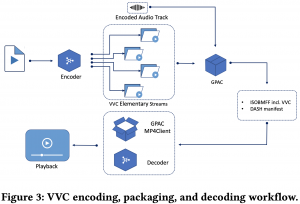
Abstract: There exist many applications that produce multimedia traffic over the Internet. Video streaming is on the list, with a rapidly growing desire for more bandwidth to deliver higher resolutions such as Ultra High Definition (UHD) 8K content. HTTP Adaptive Streaming (HAS) technique defines baselines for audio-visual content streaming to balance the delivered media quality and minimize streaming session defects. On the other hand, video codecs development and standardization help the theorem by introducing efficient algorithms and technologies. Versatile Video Coding (VVC) is one of the latest advancements in this area that is still not fully optimized and supported on all platforms. Stated optimization and supporting many platforms require years of research and development. This paper offers a dataset that facilitates the research and development of the aforementioned technologies. Our open-source dataset comprises Dynamic Adaptive Streaming over HTTP (MPEG-DASH) multimedia test assets of encoded Advanced Video Coding (AVC), High Efficiency Video Coding (HEVC), AOMedia Video 1 (AV1), and VVC content with resolutions of up to 7680×4320 or 8K. Our dataset has a maximum media duration of 322 seconds, and we offer our MPEG-DASH packaged content with two segments lengths, 4 and 8 seconds.
The dataset is available here.
The 13th ACM Multimedia Systems Conference (ACM MMSys 2022) Open Dataset and Software (ODS) track
June 14–17, 2022 | Athlone, Ireland
Vignesh V Menon (Alpen-Adria-Universität Klagenfurt), Christian Feldmann (Bitmovin, Klagenfurt), Hadi Amirpour (Alpen-Adria-Universität Klagenfurt),
Mohammad Ghanbari (School of Computer Science and Electronic Engineering, University of Essex, Colchester, UK), and Christian Timmerer (Alpen-Adria-Universität Klagenfurt).
Abstract:

VCA in content-adaptive encoding applications
For online analysis of the video content complexity in live streaming applications, selecting low-complexity features is critical to ensure low-latency video streaming without disruptions. To this light, for each video (segment), two features, i.e., the average texture energy and the average gradient of the texture energy, are determined. A DCT-based energy function is introduced to determine the block-wise texture of each frame. The spatial and temporal features of the video (segment) are derived from the DCT-based energy function. The Video Complexity Analyzer (VCA) project aims to provide an
efficient spatial and temporal complexity analysis of each video (segment) which can be used in various applications to find the optimal encoding decisions. VCA leverages some of the x86 Single Instruction Multiple Data (SIMD) optimizations for Intel CPUs and
multi-threading optimizations to achieve increased performance. VCA is an open-source library published under the GNU GPLv3 license.
Github: https://github.com/cd-athena/VCA
Online documentation: https://cd-athena.github.io/VCA/
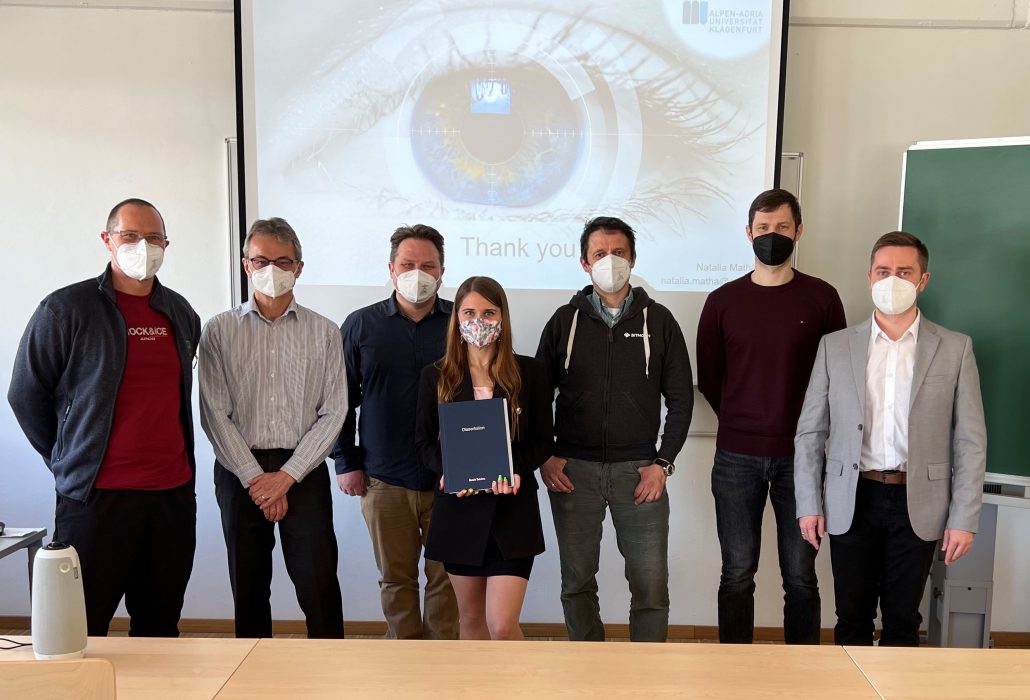 On April 6th, 2022, Natalia Mathá (former Sokolova) successfully defended her thesis on “Relevance Detection and Relevance-Based Video Compression in Cataract Surgery Videos” under the supervision of Assoc.-Prof. Klaus Schöffmann and Assoc.-Prof. Christian Timmerer. The defense was chaired by Univ.-Prof. Hermann Hellwagner and the examiners were Assoc.-Prof. Konstantin Schekotihin and Assoc.-Prof. Mathias Lux. Congratulations to Dr. Mathá for this great achievement!
On April 6th, 2022, Natalia Mathá (former Sokolova) successfully defended her thesis on “Relevance Detection and Relevance-Based Video Compression in Cataract Surgery Videos” under the supervision of Assoc.-Prof. Klaus Schöffmann and Assoc.-Prof. Christian Timmerer. The defense was chaired by Univ.-Prof. Hermann Hellwagner and the examiners were Assoc.-Prof. Konstantin Schekotihin and Assoc.-Prof. Mathias Lux. Congratulations to Dr. Mathá for this great achievement!
The 13th ACM Multimedia Systems Conference (ACM MMSys 2022)
June 14–17, 2022 | Athlone, Ireland
Reza Shokri Kalan (Digiturk Company, Istanbul), Reza Farahani (Alpen-Adria-Universität Klagenfurt), Emre Karsli (Digiturk Company, Istanbul), Christian Timmerer (Alpen-Adria-Universität Klagenfurt), and Hermann Hellwagner (Alpen-Adria-Universität Klagenfurt)
Over-the-Top (OTT) service providers need faster, cheaper, and Digital Rights Management (DRM)-capable video streaming solutions. Recently, HTTP Adaptive Streaming (HAS) has become the dominant video delivery technology over the Internet. In HAS, videos are split into short intervals called segments, and each segment is encoded at various qualities/bitrates (i.e., representations) to adapt to the available bandwidth. Utilizing different HAS-based technologies with various segment formats imposes extra cost, complexity, and latency to the video delivery system. Enabling an integrated format for transmitting and storing segments at Content Delivery Network (CDN) servers can alleviate the aforementioned issues. To this end, MPEG Common Media Application Format (CMAF) is presented as a standard format for cost-effective and low latency streaming. However, CMAF has not been adopted by video streaming providers yet and it is incompatible with most legacy end-user players. This paper reveals some useful steps for achieving low latency live video streaming that can be implemented for non-DRM sensitive contents before jumping to CMAF technology. We first design and instantiate our testbed in a real OTT provider environment, including a heterogeneous network and clients, and then investigate the impact of changing format, segment duration, and Digital Video Recording (DVR) window length on a real live event. The results illustrate that replacing the transport stream (.ts) format with fragmented MP4 (.fMP4) and shortening segments’ duration reduces live latency significantly.
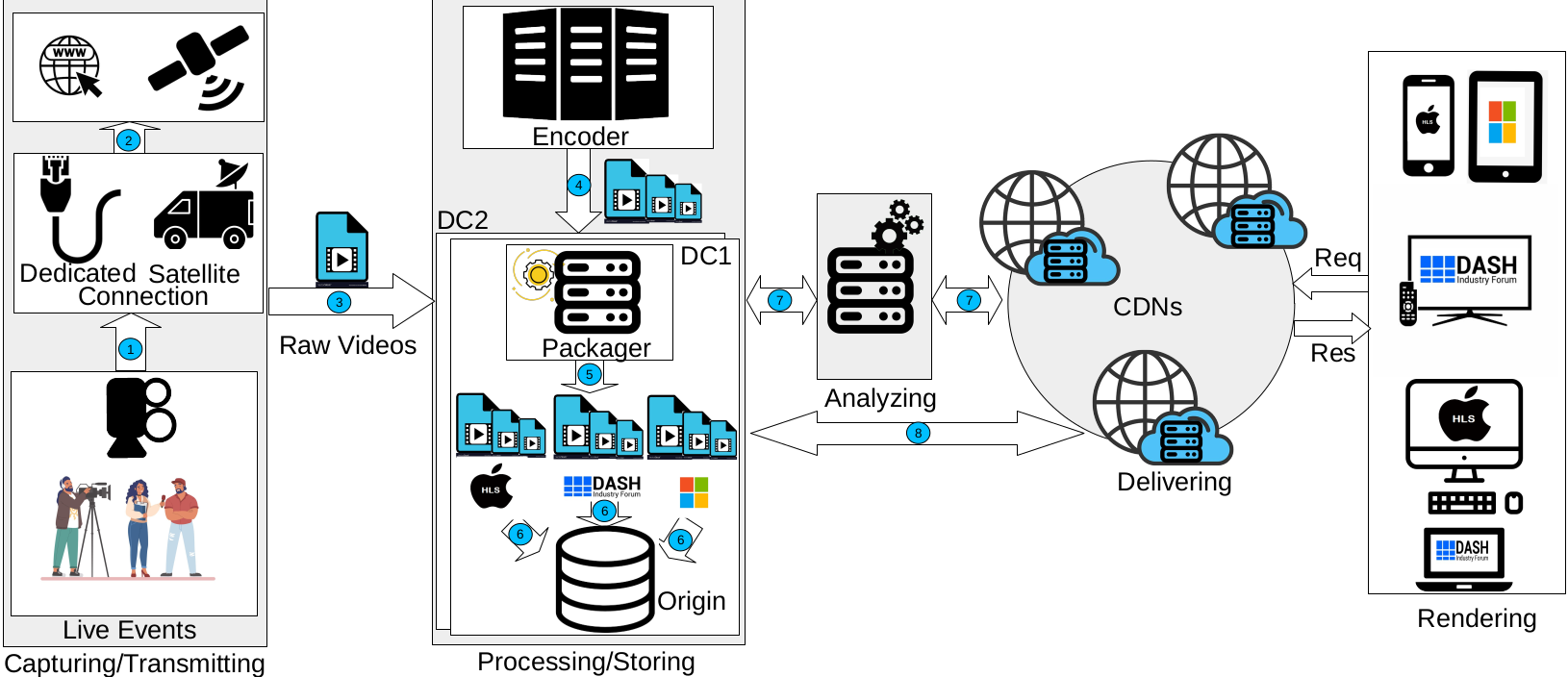
Keywords: HAS, DASH, HLS, CMAF, Live Streaming, Low Latency
colocated with ACM Multimedia 2022
October, 2022, Lisbon, Portugal
Workshop Chairs:
- Irene Viola, CWI, Netherlands
- Hadi Amirpour, Klagenfurt University, Austria
- Asim Hameed, NTNU, Norway
- Maria Torres Vega, Ghent University, Belgium
Topics of interest include, but are not limited to:
- Novel low latency encoding techniques for interactive XR applications
- Novel networking systems and protocols to enable interactive immersive applications. This includes optimizations ranging from hardware (i.e., millimeter-wave networks or optical wireless), physical and MAC layer up to the network, transport and application layers (such as over the top protocols);
- Significative advances and optimization in 3D modeling pipelines for AR/VR visualization, accessible and inclusive GUI, interactive 3D models;
- Compression and delivery strategies for immersive media contents, such as omnidirectional video, light fields, point clouds, dynamic and time varying meshes;
- Quality of Experience management of interactive immersive media applications;
- Novel rendering techniques to enhance interactivity of XR applications;
- Application of interactive XR to different areas of society, such as health (i.e., virtual reality exposure therapy), industry (Industry 4.0), XR e-learning (according to new global aims);
Dates:
- Submission deadline: 20 June 2022, 23:59 AoE
- Notifications of acceptance: 29 July 2022
- Camera ready submission: 21 August 2022
- Workshop: 10th or 14th October
ALIS’22: Artificial Intelligence for Live Video Streaming
colocated with ACM Multimedia 2022
October 2022, Lisbon, Portugal
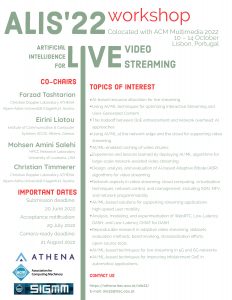
ACM Mile-High video 2022 (MHV)
March 01-03, 2022 | Denver, CO, USA
Conference Website
After running as an independent event for several years, 2022 was the first year where Mile-High Video Conference (MHV) was organized by the ACM Special Interest Group on Multimedia (SIGMM). ACM MHV is a unique forum for participants from both industry and academia to present, share, and discuss innovations and best practices from multimedia content production to consumption.
This year, MHV hosted around 270 on-site participants and more than 2000 online participants from academia and industry. Five ATHENA members travelled to Denver, USA, to present two full papers and four short papers in MHV 2022.
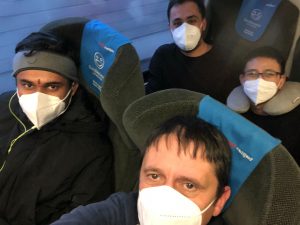


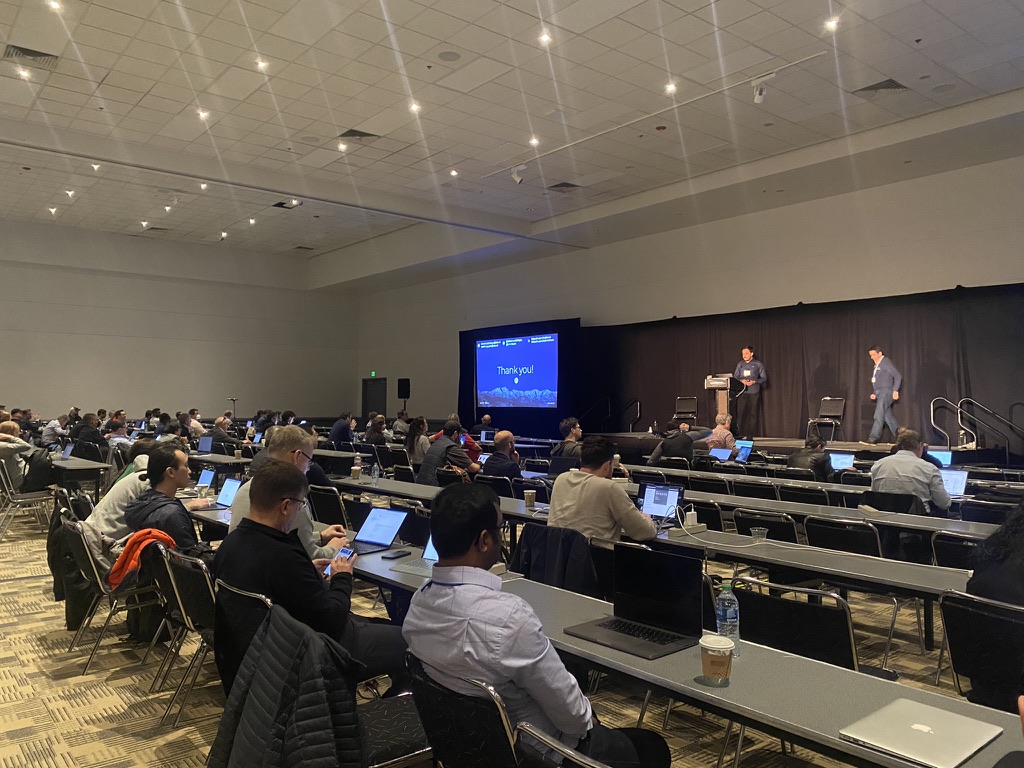
Here is a list of full papers presented in MHV:
Super-resolution Based Bitrate Adaptation for HTTP Adaptive Streaming for Mobile Devices: The advancement of mobile hardware in recent years made it possible to apply deep neural network (DNN) based approaches on mobile devices. This paper introduces a lightweight super-resolution (SR) network deployed at mobile devices and a novel adaptive bitrate (ABR) algorithm that leverages SR networks at the client to improve the video quality. More …
Take the Red Pill for H3 and See How Deep the Rabbit Hole Goes: With the introduction of HTTP/3 (H3) and QUIC at its core, there is an expectation of significant improvements in Web-based secure object delivery. An important question is what H3 will bring to the table for such services. To answer this question, we present the new features of H3 and QUIC, and compare them to those of H/1.1/2 and TCP. More …
Here is a list of short papers presented in MHV:
-
RICHTER: hybrid P2P-CDN architecture for low latency live video streaming: RICHTER leverages existing works that have combined the characteristics of Peer-to-Peer (P2P) networks and CDN-based systems and introduced a hybrid CDN-P2P live streaming architecture. [PDF]
-
CAdViSE or how to find the sweet spots of ABR systems: CAdViSE provides a Cloud-based Adaptive Video Streaming Evaluation framework for the automated testing of adaptive media players. [PDF]
-
Video streaming using light-weight transcoding and in-network intelligence: LwTE reduces HTTP Adaptive Streaming (HAS) streaming costs by enabling lightweight transcoding at the edge. [PDF]
-
Efficient bitrate ladder construction for live video streaming: This paper introduces an online bitrate ladder construction scheme for live video streaming applications using Discrete Cosine Transform (DCT)-energy-based low-complexity spatial and temporal features. [PDF]







